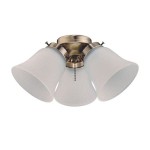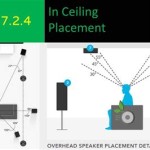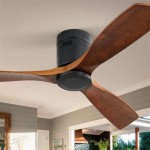How Much To Install a Ceiling Light
Installing a new ceiling light can significantly enhance a room's ambiance and functionality. However, budgeting for this improvement requires understanding the various factors influencing the overall cost. This article explores these factors to provide a comprehensive overview of ceiling light installation expenses.
One of the primary cost drivers is the type of ceiling light chosen. Basic flush-mount fixtures tend to be the most affordable, with prices ranging from $20 to $100. More elaborate options, such as chandeliers, pendant lights, and recessed lighting, command higher prices, often exceeding $100 and sometimes reaching several hundred dollars depending on the size, materials, and design complexity.
The complexity of the installation itself plays a significant role in the final cost. Replacing an existing fixture with a similar model is generally straightforward and less expensive than installing a light in a new location. New installations often require running electrical wiring, cutting into drywall, and patching, which adds to labor costs.
Electrical work invariably requires the expertise of a qualified electrician. Labor rates vary based on location, experience, and demand. Homeowners can expect to pay anywhere from $50 to $100 per hour for an electrician's services. A simple fixture swap might take less than an hour, while more complex installations can necessitate several hours of work.
Beyond the fixture and labor, additional materials contribute to the overall expense. These can include electrical boxes, wiring, connectors, wall anchors, screws, and potentially drywall repair materials. While these individual items might seem inexpensive, they can collectively add a noticeable amount to the project's total cost.
Ceiling height is an often-overlooked factor that can influence installation costs. Standard ceiling heights typically pose no additional challenges. However, unusually high ceilings require specialized equipment, such as scaffolding or extension ladders, potentially increasing labor time and expenses.
The location of the installation within the home can also affect pricing. Installing a light in a finished basement, for example, may require navigating existing ductwork or plumbing, adding complexity and potentially increasing labor costs. Similarly, installations in tight or difficult-to-access spaces can also add to the overall expense.
Certain types of fixtures require specialized installation procedures, impacting the final cost. Recessed lighting, for example, necessitates cutting precise holes in the ceiling and installing the housing units before connecting the wiring and installing the trim. This added complexity generally translates to higher labor costs.
Obtaining necessary permits is an essential part of any electrical work. Permit fees vary by location and are typically based on the project's scope. While seemingly a minor expense, it is an essential inclusion in the overall budget.
Homeowners can sometimes reduce costs by performing some of the preparatory work themselves, such as removing the old fixture or patching drywall. However, all electrical connections should be handled by a qualified electrician to ensure safety and compliance with building codes.
Geographic location plays a significant role in determining electrician labor rates. Areas with a higher cost of living generally have higher labor costs, impacting the overall expense of ceiling light installation. Researching prevailing rates in one's specific area is crucial for accurate budgeting.
Time of year can also influence pricing. Electricians are often in higher demand during peak seasons, such as the summer months or around holidays. Scheduling installations during off-peak times may offer potential cost savings.
When comparing quotes from different electricians, it's crucial to ensure they include all relevant costs. This includes the cost of the fixture, labor, materials, permits, and any other applicable fees. Transparency in pricing allows for informed decision-making.
While cost is a significant consideration, prioritizing quality workmanship is paramount. A properly installed ceiling light ensures safety and prevents potential electrical hazards. Opting for a reputable and qualified electrician, even if slightly more expensive, provides peace of mind and long-term value.
Planning for unforeseen issues is essential in any home improvement project. Setting aside a small contingency fund can help cover unexpected costs, such as discovering faulty wiring or needing additional materials.
By carefully considering these various factors, homeowners can develop a realistic budget for their ceiling light installation project. Thorough planning and research are crucial for making informed decisions and ensuring a successful outcome.
How Much Does It Cost To Install A Ceiling Light Without Existing Wiring Quora

How Much Does It Cost To Install A Ceiling Light Without Existing Wiring Cld Electric San Diego

Cost To Replace Or Repair A Light Fixture In 2024 Homeguide

Lighting Installation Costs Estimate Tutor

Cost To Install A Ceiling Light Without Existing Wiring

Cost To Install Recessed Ceiling Lights In 2024 Forbes Home

How To Install Ceiling Light Homeserve Usa

How To Install Pendant Lights Homeserve Usa

Mounting Light Fixtures Fine Homebuilding

How To Install A Vintage Ceiling Light Fixture Simple Decorating Tips








